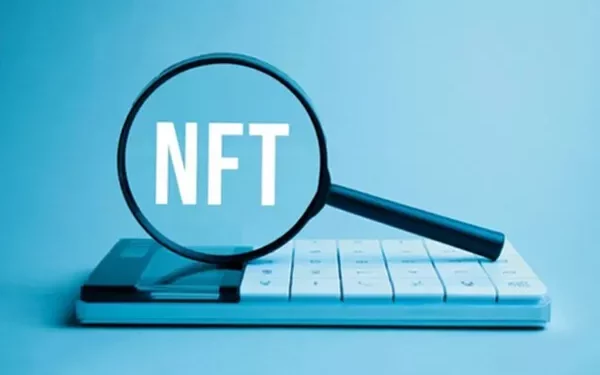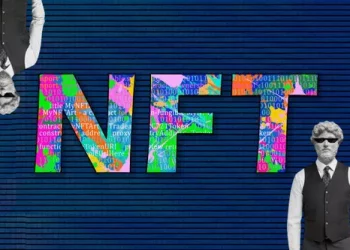Creating an NFT book represents an innovative way to merge traditional publishing with modern blockchain technology. Non-fungible tokens (NFTs) are unique digital assets verified using blockchain technology, and they are gaining popularity in various sectors, including literature. An NFT book allows authors to monetize their work in new ways, offering collectors exclusive access to digital content and other perks. This article provides a comprehensive guide on how to create an NFT book, covering the essential steps and considerations involved.
Understanding NFTs and Their Applications in Publishing
Before diving into the creation process, it’s crucial to understand what NFTs are and how they can be applied to books.
1. What is an NFT?
A non-fungible token (NFT) is a digital asset that represents ownership or proof of authenticity of a unique item, typically stored on a blockchain. Unlike cryptocurrencies like Bitcoin, which are interchangeable, NFTs are unique and cannot be exchanged on a one-to-one basis.
Blockchain Technology: NFTs are built on blockchain technology, which ensures the security and transparency of ownership and transaction records.
Uniqueness: Each NFT has a unique identifier, making it distinct from other tokens. This uniqueness is crucial for digital collectibles, art, and other digital assets.
2. NFTs in Publishing
In the context of publishing, NFTs can offer several advantages:
Ownership and Provenance: NFTs provide a way to prove ownership and authenticity of digital books, ensuring that buyers can verify their purchase.
Monetization: Authors can sell their books as NFTs, potentially earning more from each sale and gaining access to new revenue streams.
Enhanced Features: NFT books can include additional features such as exclusive content, limited editions, and interactive elements that enhance the reader’s experience.
Steps to Create an NFT Book
Creating an NFT book involves several steps, from conceptualizing the content to minting the NFT and marketing it. Here’s a detailed guide to help you through the process.
1. Develop Your Book Content
The first step is to create the content for your NFT book.
Writing: Write or finalize your book manuscript. Ensure that the content is polished and ready for publication.
Format: Decide on the format of your book. NFT books are typically digital, so you’ll need to choose a format that suits digital distribution, such as PDF, EPUB, or interactive formats.
Design: Design the cover and layout of your book. High-quality visuals can enhance the appeal of your NFT book and attract potential buyers.
2. Choose the Right Blockchain
NFTs are created and managed on various blockchains, each with its own features and benefits.
Ethereum: Ethereum is the most popular blockchain for NFTs due to its robust support for smart contracts and widespread adoption. It uses the ERC-721 and ERC-1155 token standards for NFTs.
Binance Smart Chain (BSC): BSC is another option that offers lower transaction fees compared to Ethereum. It uses the BEP-721 and BEP-1155 standards.
Polygon: Polygon (formerly Matic Network) is a layer-2 scaling solution for Ethereum that offers lower fees and faster transactions.
Solana: Solana is known for its high-speed transactions and low fees. It uses the SPL token standard for NFTs.
3. Mint Your NFT Book
Minting an NFT involves creating a digital token that represents your book on the chosen blockchain.
Create a Wallet: Set up a digital wallet that supports NFTs and the blockchain you’ve chosen. Popular options include MetaMask, Trust Wallet, and Phantom Wallet.
Select an NFT Platform: Choose an NFT platform where you will mint your book. Examples include OpenSea, Rarible, Foundation, and Mintable. Some platforms are specific to certain blockchains, so ensure compatibility with your chosen blockchain.
Upload Your Book: Upload the digital file of your book to the NFT platform. You may also include additional metadata such as the book title, author name, and a description.
Set Metadata: Define the metadata for your NFT book. This can include information about the book’s edition, creator details, and any special features or perks associated with the NFT.
Mint the NFT: Follow the platform’s process to mint the NFT. This typically involves paying a small fee to create and store the token on the blockchain. Once minted, your NFT book will be live and available for sale or distribution.
4. Include Unique Features
One of the benefits of NFT books is the ability to include unique features and perks.
Exclusive Content: Offer exclusive chapters, illustrations, or multimedia elements that are only available to NFT holders.
Limited Editions: Create limited edition NFTs that offer a sense of rarity and exclusivity. This can enhance the book’s appeal and value.
Interactive Elements: Consider adding interactive elements such as hyperlinks, embedded videos, or augmented reality features to enrich the reader’s experience.
5. Market Your NFT Book
Marketing is crucial for the success of your NFT book.
Build an Audience: Leverage social media platforms, newsletters, and your website to build an audience and generate interest in your NFT book.
Collaborate with Influencers: Partner with influencers and bloggers in the NFT and literary communities to promote your book and reach a wider audience.
Join NFT Communities: Engage with NFT communities and forums to network with potential buyers and enthusiasts.
Create a Launch Plan: Develop a launch plan that includes promotional events, limited-time offers, and other strategies to create buzz around your NFT book.
6. Sell and Distribute Your NFT Book
Once your NFT book is minted and marketed, you’ll need to manage sales and distribution.
Sales Channels: Decide where and how you will sell your NFT book. This can include NFT marketplaces, direct sales through your website, or auctions.
Price Setting: Set a price for your NFT book based on its unique features, rarity, and market demand. You may also consider using auction mechanisms to determine the final price.
Royalty Mechanisms: Consider setting up royalty mechanisms to earn a percentage of future sales or resales of your NFT book. This can provide ongoing revenue from your digital asset.
7. Legal and Copyright Considerations
Ensure that you address legal and copyright issues related to your NFT book.
Copyright Protection: Ensure that your book content is protected by copyright. This may involve registering your copyright with the relevant authorities.
Licensing: Clearly define the licensing terms associated with your NFT book. Specify what rights buyers will have, such as the ability to resell, share, or use the content.
Compliance: Ensure compliance with relevant laws and regulations related to digital assets, copyright, and intellectual property.
Examples of Successful NFT Books
Examining successful NFT books can provide inspiration and insight.
1. “The First Ever NFT Book” by Robness
Robness, a prominent figure in the NFT space, released “The First Ever NFT Book” as an NFT. The book combines traditional storytelling with digital art, offering readers a unique and interactive experience.
Features: The NFT includes exclusive content, digital artwork, and interactive elements that enhance the reader’s engagement.
Success Factors: The book’s success can be attributed to its innovative approach, strong marketing efforts, and the author’s established reputation in the NFT community.
2. “The Book of Genesis” by Steven Levy
Steven Levy’s “The Book of Genesis” was released as an NFT, offering readers a digital edition with exclusive commentary and annotations.
Features: The NFT includes special annotations and interactive features that provide additional context and insights.
Success Factors: The book’s success is due to its unique content and the author’s prominence in the tech and literature sectors.
See also: How to Mint a Polygon NFT
Conclusion
Creating an NFT book offers a unique opportunity to blend traditional publishing with cutting-edge technology. By understanding the basics of NFTs, selecting the right technology, and following the steps outlined in this article, you can create and launch an NFT book that stands out in the digital marketplace.
From developing your book content to minting and marketing the NFT, each step requires careful planning and execution. By incorporating unique features and leveraging the benefits of blockchain technology, you can offer readers an innovative and engaging experience.
As the world of NFTs continues to evolve, staying informed about trends and developments can help you make the most of this exciting new medium. With the right approach, your NFT book can capture the imagination of readers and collectors, offering new ways to experience and enjoy literature in the digital age.
Related topics:

















